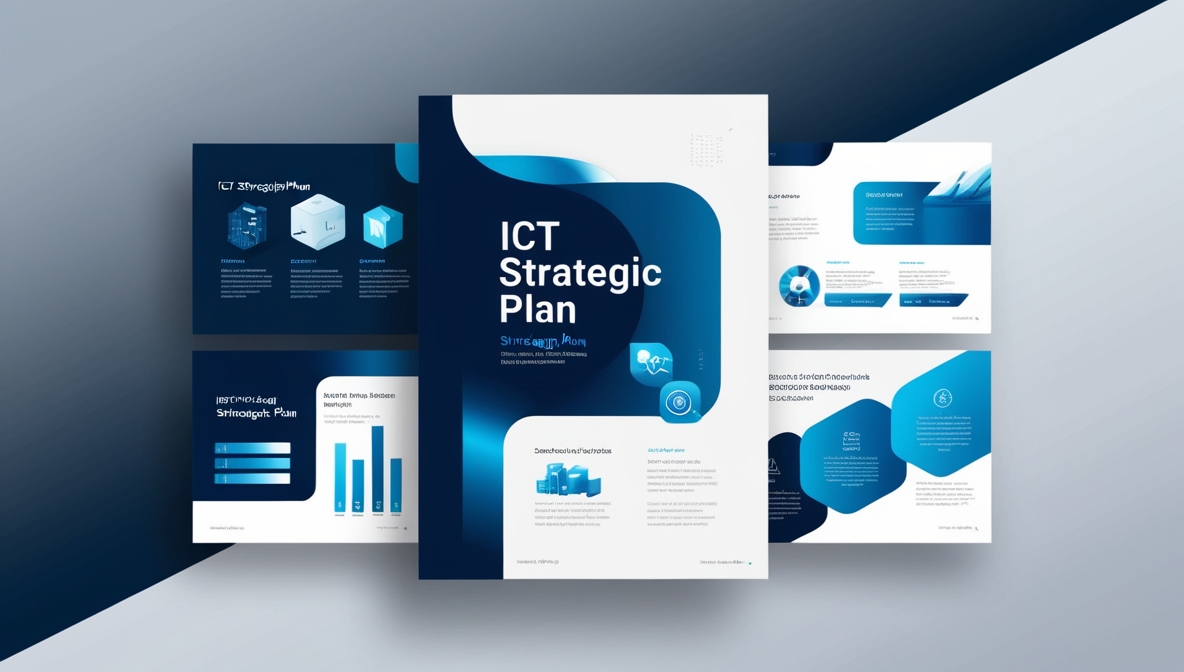This example ICT strategic plan serves as a transformative roadmap for CIOs looking to leverage technology to drive organizational change. It illustrates how strategic ICT investments and initiatives can enhance operational efficiency, improve service delivery, and foster innovation across the organization.
Organizations today navigate an environment where technological advancements rapidly transform business landscapes. Many organizations struggle to effectively integrate technology into their strategic planning. Without a clear roadmap, efforts to adopt ICT solutions can become disjointed, leading to inefficiencies and missed opportunities for innovation. The gap between technological potential and its effective application can widen, resulting in organizations falling behind their competitors. The lack of a strategic approach to ICT adoption can stifle growth, reduce customer satisfaction, and impede the ability to adapt to changing market demands.
Effective integration of Information and Communication Technology (ICT) is no longer a luxury but a necessity for operational excellence and competitive edge. This backdrop sets the stage for the strategic imperative addressed by this ICT strategic plan example. This example ICT strategic plan addresses these challenges head-on. It outlines a structured approach for CIOs, detailing specific initiatives and strategies to transform their organizations through technology. The plan emphasizes customer-centric solutions, operational optimization, and the adoption of cutting-edge technologies to drive organizational change.
This example ICT strategic plan showcases a strategic framework for leveraging technology to drive significant improvements across an organization. It focuses on identifying and addressing the critical challenges that hinder operational efficiency and innovation, presenting a clear path for integrating advanced ICT solutions into core business processes. By emphasizing the importance of aligning technology initiatives with organizational goals, it provides a pragmatic approach to transforming service delivery, enhancing customer engagement, and achieving competitive advantage through digital innovation.
The plan further underscores the necessity for a proactive stance towards technology adoption, highlighting the role of leadership in fostering a culture that embraces change and innovation. It presents an array of strategic initiatives designed to equip organizations with the tools and methodologies needed to navigate the complexities of the digital era. Through a meticulously planned execution strategy, it illustrates how targeted ICT investments can catalyze organizational growth, optimize performance, and secure a leadership position in an increasingly digital marketplace.
Main Contents:
- Strategic ICT Vision and Objectives
- Assessment of Current ICT Landscape
- Key ICT Challenges and Opportunities
- Strategic ICT Initiatives and Roadmap
- Implementation Framework and Governance
Key Takeaways:
- Emphasizes the critical role of ICT in achieving organizational transformation and operational efficiency.
- Identifies the necessity for a thorough assessment of the current ICT infrastructure to inform future strategies.
- Highlights the importance of addressing both challenges and opportunities in the digital landscape for sustained growth.
- Outlines a set of strategic initiatives aimed at leveraging technology for service improvement and innovation.
- Stresses the importance of a structured implementation plan, supported by strong governance to ensure strategic objectives are met.
This example ICT strategic plan, "Transformation Roadmap for CIOs," can serve as a pivotal resource for CIOs and IT leaders aiming to navigate the complexities of digital transformation within their organizations. By incorporating this document's insights, CIOs can:
- Strategically Align ICT with Business Goals: This document offers a blueprint for aligning ICT initiatives with overarching business objectives, ensuring that technology investments directly contribute to achieving key organizational outcomes.
- Identify and Address Technology Gaps: Through a comprehensive assessment of the current ICT landscape, as outlined in the plan, CIOs can pinpoint critical technology gaps and areas requiring enhancement to support future growth and innovation.
- Prioritize and Execute Strategic ICT Initiatives: By following the strategic initiatives and roadmap provided, IT leaders can prioritize actions based on their potential impact, driving forward projects that offer the highest value to the organization.
- Foster a Culture of Innovation: The plan emphasizes the importance of adopting cutting-edge technologies and innovative practices. CIOs can use this guidance to cultivate an organizational culture that embraces change, experimentation, and continuous improvement.
- Measure and Sustain ICT Performance: With a clear implementation framework and governance model, CIOs can establish metrics to measure the performance and impact of ICT initiatives, ensuring continuous alignment with business goals and adapting strategies as necessary.
This plan equips CIOs with a structured approach to harnessing ICT as a catalyst for transformation, enabling them to solve real-world challenges by enhancing operational efficiency, improving service delivery, and driving organizational innovation.

